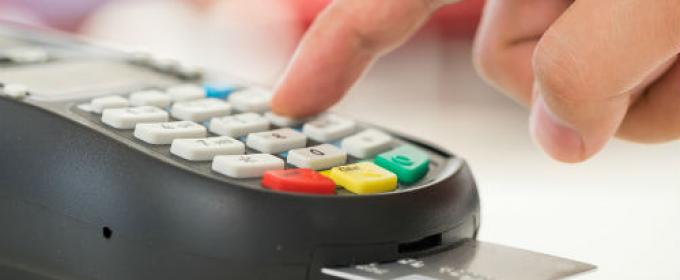
For many years, all liability for fraudulent transactions has been assumed by credit card companies. However, the global numbers for credit card fraud have continued to grow, and major credit card companies have been working on a solution to the problem.
Visa, MasterCard and EuroPay are some of the biggest companies in the industry. After spending nearly a decade working on a solution, these major companies have decided to move consumers away from using magnetic strip cards and towards EMV.
The sensitive information on a magnetic strip card is carried from one purchase to the next and remains static. EMV cards are different because they have microprocessors embedded inside, which create single-use authentication codes for each individual transaction.
The end result is that EMV cards are significantly more difficult to counterfeit than magnetic strip cards. Currently, most of the other largest countries in the world are using EMV cards, but the United States has been very slow to adopt the technology.
The major players in the credit card industry hope to speed up the process and accelerate the adoption of EMV technology in the United States. To start the process, the major companies are shifting liability for fraudulent transactions to merchants who haven’t upgraded to the new EMV technology.
The liability switch starts on October 1st, 2015. After this date, the liability for fraudulent POS transactions falls onto merchants who aren’t equipped to accept EMV cards. Governments and cities have a few different ways that they can respond to the deadline.
Municipal and State Governments
The deadline is not a mandate. After the shift, liability for fraudulent charges is transferred from card issuers to merchants. However, municipal and state governments aren’t required to have EMV POP terminals by the deadline.
By the end of the year, the switch by credit card companies should only be about 70 percent finished. The new EMV chip credit cards will have both chips and magnetic strips.
In other words, the major credit card companies are giving city and county governments plenty of time to research the problem and decide what time is best to make the switch to EMV devices.
Cost Might Play a Major Role
The cost of switching to the new technology could be a major problem for merchants. All merchants have budgets, and it might take a while before budgets allow for proper equipment upgrades.
A standard EMV capable pay terminal can cost about $200. A single retail store might have 30 or more terminals, so the cost of installing EMV pay terminals in hundreds of stores can be quite expensive.
Another potential issue is EMV conversion because it’s significantly more complex than unplugging card readers and replacing them with new ones. New backend code is required, and there is a certification process that can take many months.
Chip Cards Might Not Work As Planned
It’s true that EMV card adoption has the potential to greatly reduce card counterfeiting. However, the new technology will have minimal impact on online card fraud. The additional security benefits provided by the new EMV technology is only useful for card-present, in-person transactions.
Both EMV and magnetic strip cards offer the same level of security for online transactions, so the new technology won’t increase security for online transactions. This means that strong network security is extremely crucial. Strong security is needed to protect transactions involving both types of card technology.
There is a way for the new EMV technology to increase security for both offline and online purchases, and it involves the use of PIN verification for every transaction. Unfortunately, the new EMV technology only requires a signature for card authorization.
While other countries have successfully adopted PIN authentication for every transaction using EMV cards, it’s unlikely that the United States will be able to adopt this additional security measure. Even without the use of EMV chip cards, counterfeit transactions are still quite rare for city and county government agencies.
When someone steals credit card information, they’re far more likely to purchase a product that they can resell for cash. It wouldn’t make much sense to steal credit card information and use it to renew their driver’s license, for example.
With all considerations made, counties and cities have plenty of time to create a precise plan. It’s likely that these agencies will continue using existing equipment and accept liability for the very few fraudulent transactions they receive. By doing this, agencies will be able to budget effectively and install the required infrastructure for EMV technology over time.
A Look at the Numbers
While most merchants are aware of the upcoming liability shift, many of them don’t fully understand the UX EMV migration roadmap. According to current estimates, there are roughly 1.24 billion payment cards in use. There are 15.4 million POS terminals.
The majority of these terminals are located in countries outside of the United States. Currently, a large percentage of global card transactions occur with the new EMV technology. However, a few counties still haven’t adopted the technology, and the United States us one of them.
Asia, Latin America, Canada and Europe are all transitioning smoothly to EMV technology. The United States is the single largest user for payment cards and has only just started the transition process. Card fraud is the major driving force behind the switch.
While global law enforcement agencies have continued efforts to stop it, card fraud has continued to rise steadily. Every year, about $8.6 billion dollars of card fraud is committed in the United States.
Mobile payments are also rising with the fraud. All of the major players agree that now is the best time to take action against the fraud. In fact, a number of countries are throwing around the idea of completely banning magnetic strip cards, which have been the payment standard for over 40 years.
For many merchants, the liability shift might seem scary, but it doesn’t mean merchants must switch to EMV technology immediately. However, it does mean that merchants need to start seriously planning the course of action they wish to take.
A number of merchants don’t suffer from large amounts of fraudulent transactions, so for these merchants, the best course of action might be to continue using existing technology while planning to switch in the future. The threat of fraud liability is huge for other merchants, so they will need to implement changes very quickly.
The total cost for global implementation of the new EMV chip technology is estimated at $8.65 billion. However, after considering the fact that card fraud is expected to rise to $10 billion by 2015, the other estimate doesn’t seem so bad. The bottom line is that EMV might not impact some business immediately, but at some point in the future, it will.







